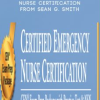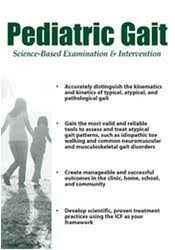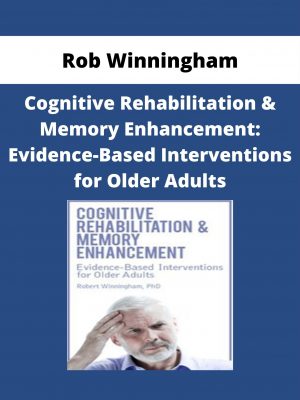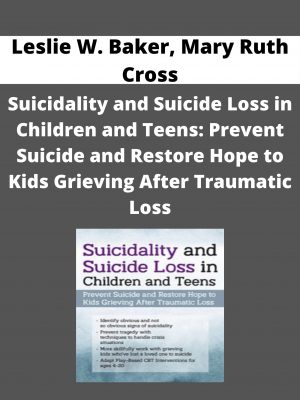Paula Cox – Pediatric Gait
$219 Original price was: $219.$62Current price is: $62.
Shopping Instructions:
- DISCOUNT 15% : SHOP15
- Product Delivery: Within 1 – 12 hours after purchase.
For those who assist pediatric patients with gait, you know firsthand the crucial role that autonomous locomotion has on the lives of infants and children, especially in regards to participating with their peers.
Paula Cox – Pediatric Gait
KINEMATICS & KINETICS OF TYPICAL, ATYPICAL, & PATHOLOGICAL GAIT
- Components of gait
- Alignment of joints during gait
- Force production and gait efficiency
INTERNATIONAL CLASSIFICATION OF FUNCTION, DISABILITY, & HEALTH (ICF)
- Review components of ICF
- ICF as a framework for pediatric practice
- Moving toward scientific practices
MEASUREMENT TOOLS
- Psychometrically sound measurement tools
- Valid and reliable measurement tools to assess gai
OUTCOME DEVELOPMENT
- Using ICF to inform outcome development
- Developing functional and measurable outcome
INTERVENTION
- What is evidence-based practice
- Review presently used interventions for neuromuscular and musculoskeletal gait disorders
- Neuroplasticity and motor learning, and their importance in intervention
- Research that supports or refutes effectiveness of interventions for common pediatric gait disorders
- Interventions for musculoskeletal and neuromuscular gait disorders with clear supportive evidence
OUTCOME MEASUREMENT
- Review need for psychometrically sound measurement tools
- Review valid and reliable outcome measurement tools
CASE STUDY
- Assessment
- Intervention
- Outcome
Would you like to receive Paula Cox – Pediatric Gait ?
Description:
Interventions with Pediatric Gait: What Works & What Doesn’t
For those who assist pediatric patients with gait, you know firsthand the crucial role that autonomous locomotion has on the lives of infants and children, especially in regards to participating with their peers. However, are you utilizing scientific practices in the examination, evaluation, and treatment of the children with whom you work? Are you using the latest and most appropriate interventions for pediatric gait disorders based on the evidence?
Find out how you can improve your care with children’s gait in this recording. Skillfully explore the science of pediatric rehabilitation through the presentation of the ICF as a framework for pediatric physical therapy practice. Watch and learn as the group discusses the components of typical, atypical, and pathological gait. In addition, you will evaluate the most reliable and evidence-based tools to examine and assess skill levels and progress for children with commonly seen gait disorders. Return to your practice with the proper tools to move from an intuitive-based practice to a science-based practice, resulting in better outcomes for your clients.
Related products
HEALTH & MEDICAL
HEALTH & MEDICAL
HEALTH & MEDICAL
HEALTH & MEDICAL
KettleWorX – 8 Week Rapid Evolution Advanced Set with Alex Isaly
HEALTH & MEDICAL
HEALTH & MEDICAL
Dr. J.E. Williams & Kevin Gianni – How to Read Your Blood Tests
HEALTH & MEDICAL












